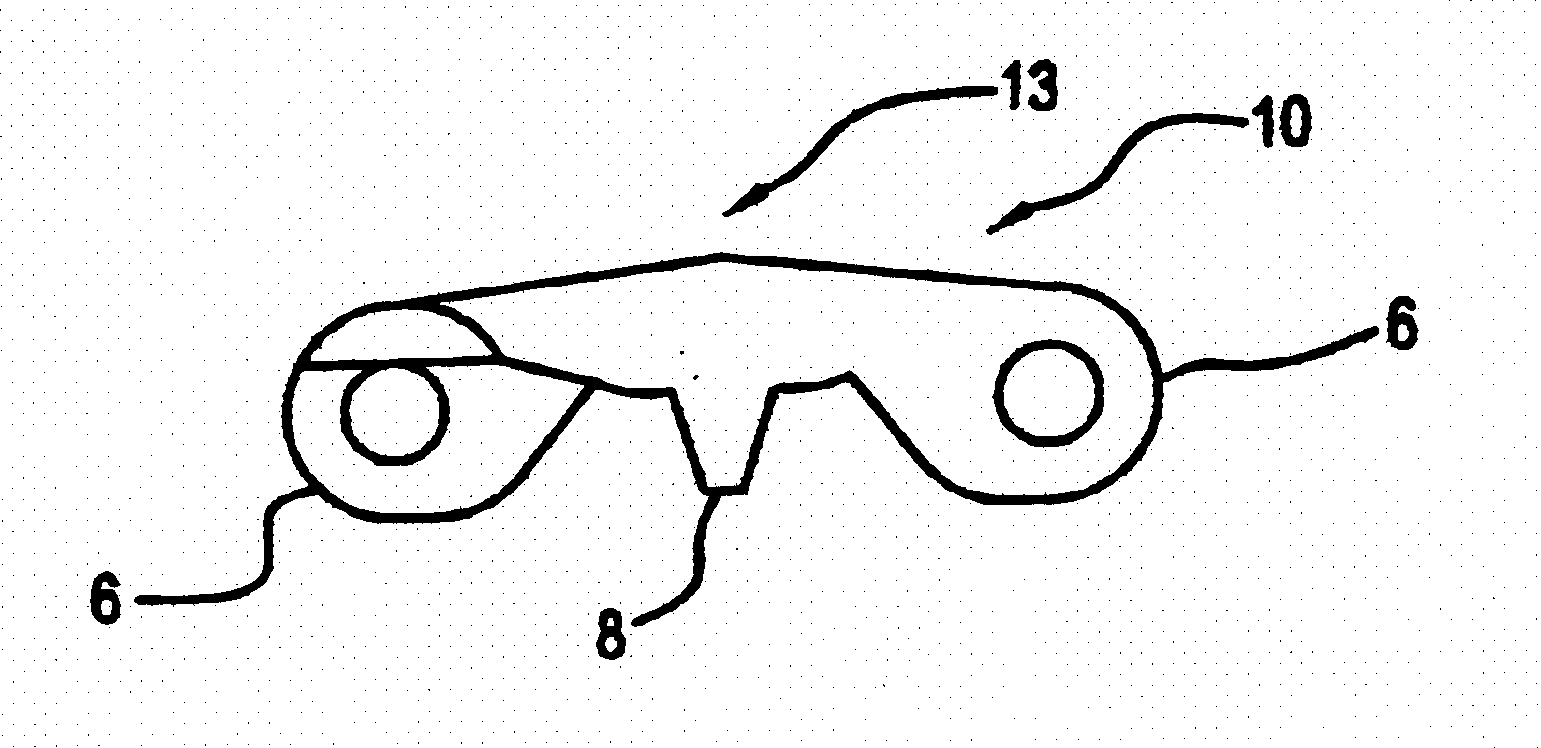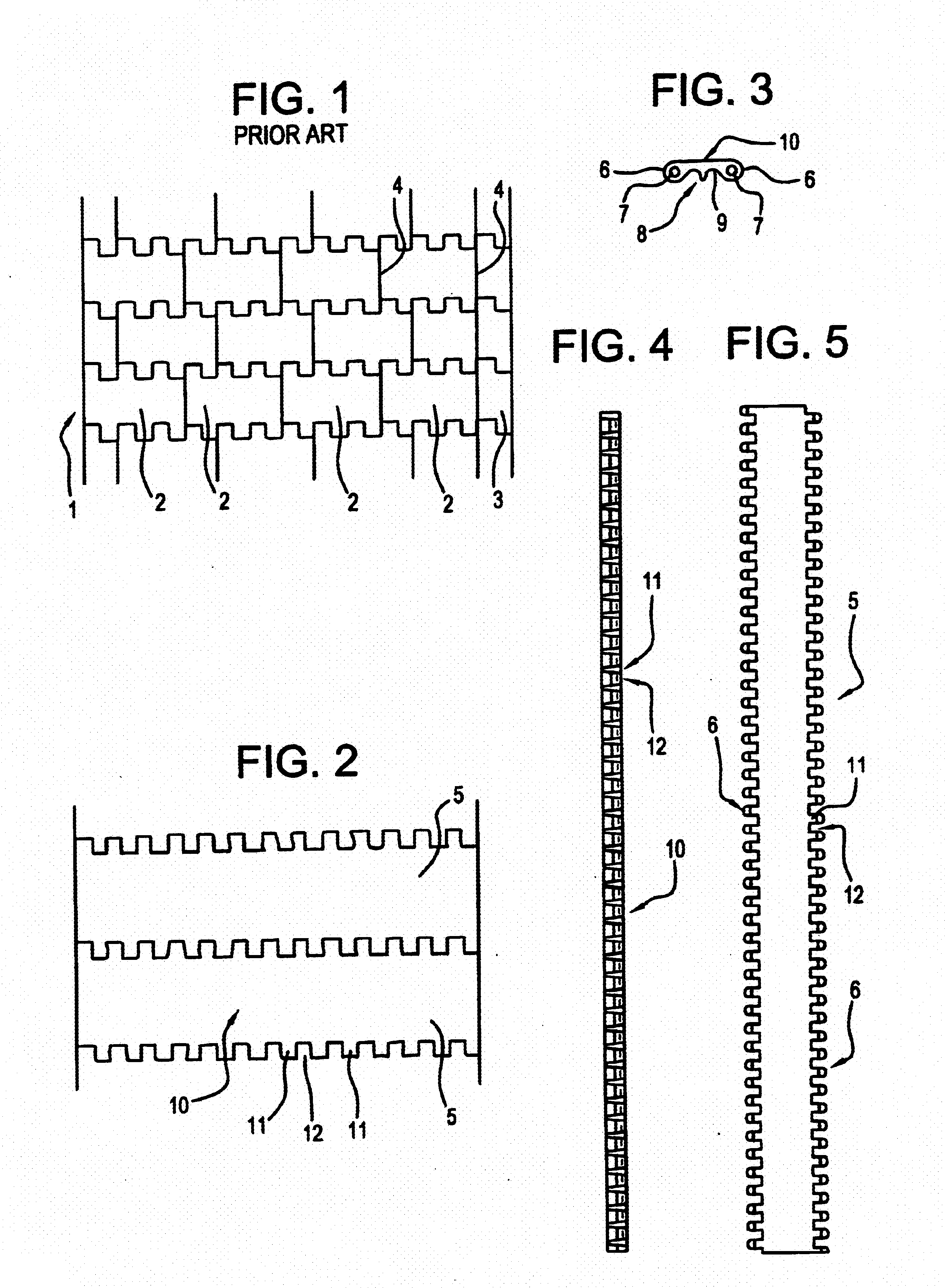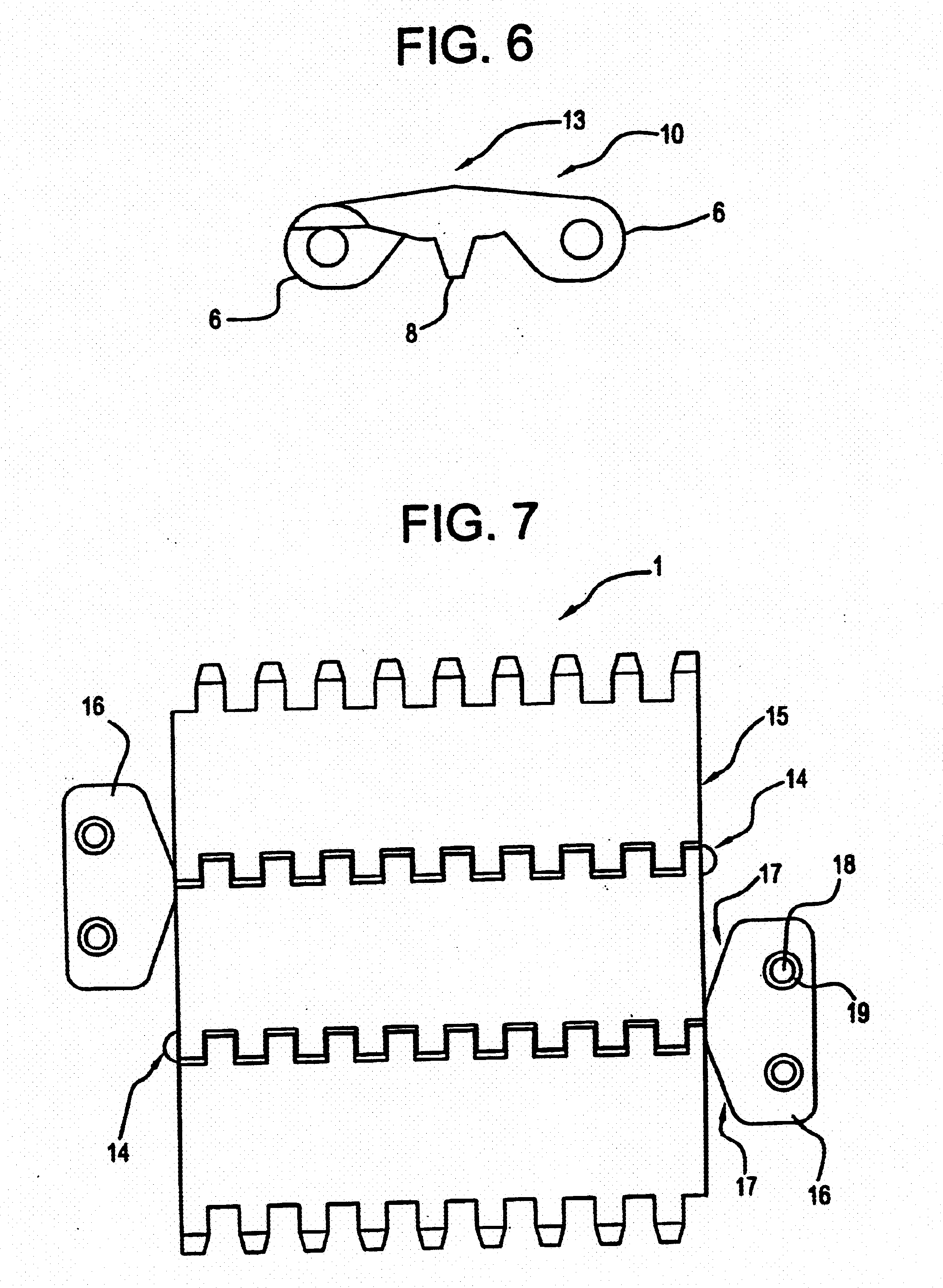Wide chain link conveyor structure
- Summary
- Abstract
- Description
- Claims
- Application Information
AI Technical Summary
Benefits of technology
Problems solved by technology
Method used
Image
Examples
Embodiment Construction
FIG. 1 illustrates a traditional conveyor belt having the width necessary for handling fresh food products such as meat, carcasses and the like. The conveyor 1 is constructed from a number of chain links 2, 3. Most of the chain links 2 are identical, but in order to achieve a stronger structure of the conveyor belt there is inserted odd chain links 3, whereby the chain links will be staggered in relation to chain links in an adjacent row such that a brick pattern will arise. The conveyor belt 1 illustrated in FIG. 1 only serves to illustrate how a prior art conveyor belt of the type which the present invention concerns is traditionally constructed. It should be noted that normally at least six or seven chain links are assembled in order to provide the desired width of the conveyor. This in turn gives rise to a number of gaps 4 between adjacent chain links in the same row.
As work often will take place on the top surface of the chain link it is unavoidable that debris such as small pi...
PUM
 Login to View More
Login to View More Abstract
Description
Claims
Application Information
 Login to View More
Login to View More - R&D
- Intellectual Property
- Life Sciences
- Materials
- Tech Scout
- Unparalleled Data Quality
- Higher Quality Content
- 60% Fewer Hallucinations
Browse by: Latest US Patents, China's latest patents, Technical Efficacy Thesaurus, Application Domain, Technology Topic, Popular Technical Reports.
© 2025 PatSnap. All rights reserved.Legal|Privacy policy|Modern Slavery Act Transparency Statement|Sitemap|About US| Contact US: help@patsnap.com



